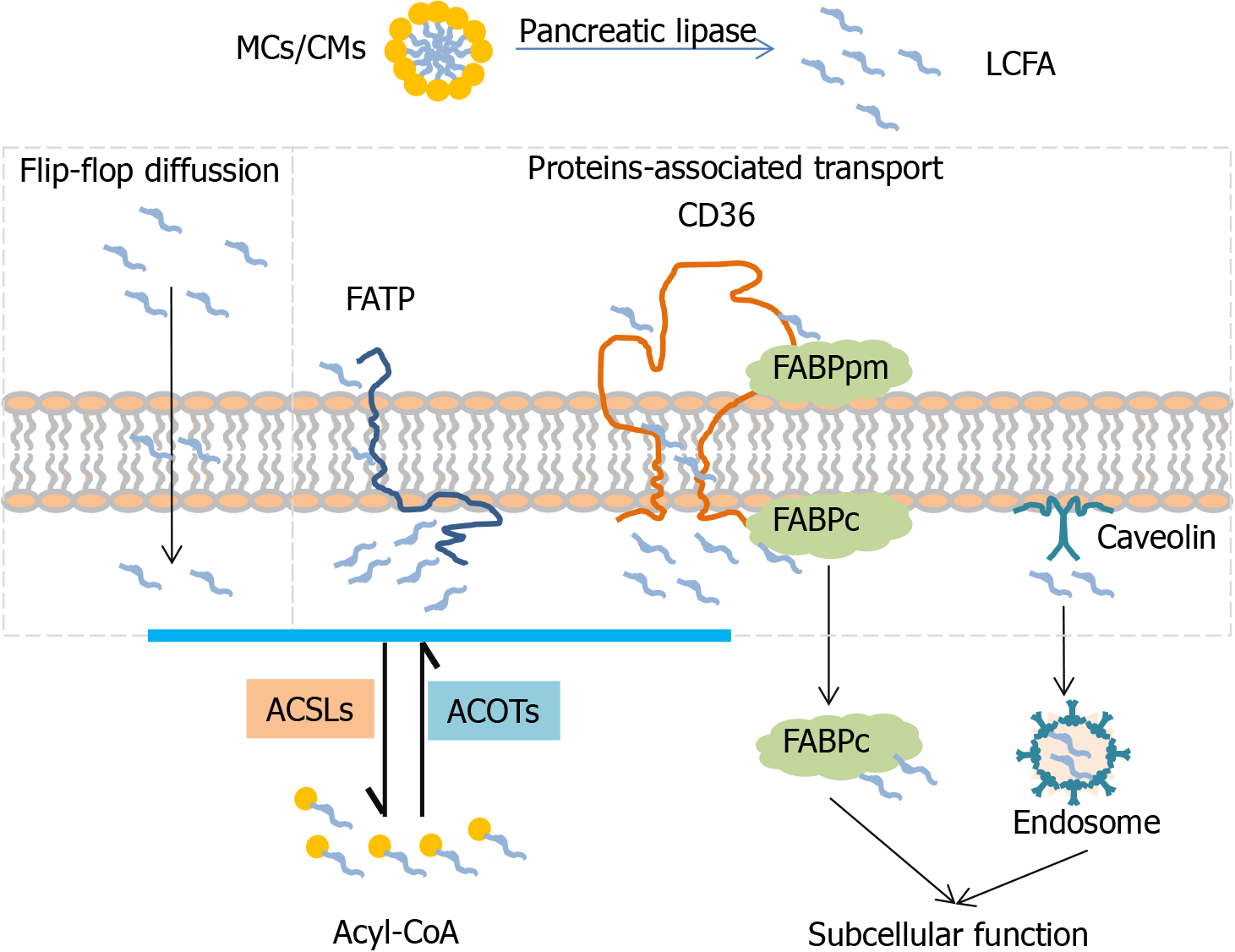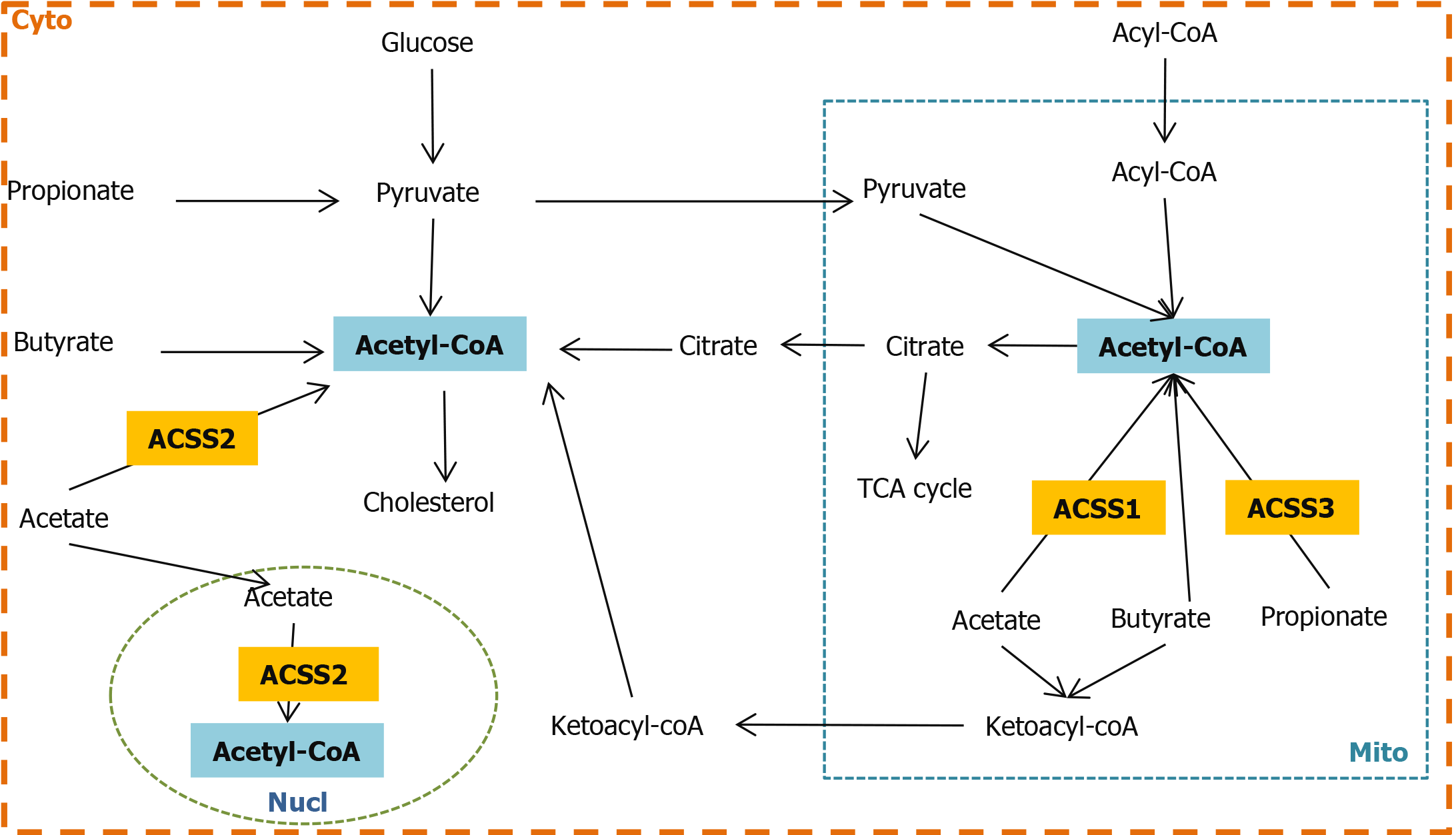Copyright
©The Author(s) 2021.
World J Hepatol. Nov 27, 2021; 13(11): 1512-1533
Published online Nov 27, 2021. doi: 10.4254/wjh.v13.i11.1512
Published online Nov 27, 2021. doi: 10.4254/wjh.v13.i11.1512
Figure 1 Mechanism of long-chain fatty acid transport across the lipid raft.
LCFAs are taken up into cell in two different ways. One is passive transport by a flip-flop with rate limiting. The other is active transport, which is mediated with transport-associated proteins (FATPs, CD36, FABPs and Caveolin). FATPs with tissue-specific distribution integrating both transport and activation functions are responsible for LCFAs uptake. Free FAs trapped by the FABPpm present to CD36 and are transported into cells. Consequently released free FAs bind with FABPc and CAV channel into different organelles and are activated by different subcellular expression of ACSLs into acyl-CoA. In addition, acyl-CoA can be deactivated to free FA and CoA which is mediated by ACOTs. Liver-specific proteins: FATP5, FABP-L, ACSL1; Intestine-specific proteins: FATP4, FABP-I, ACSL5; ACSL: Acyl-CoA synthetase, ACOT: Acyl-CoA thioesterase; MCs: Micelles, CMs: Chylomicrons
Figure 2 The crosslink between acyl-CoA synthetases and short-chain fatty acids.
In mitochondria, acetyl-CoA is generated either from fatty acid β-oxidation and glucose via pyruvate or SCFAs through ACSS1 and ACSS3; acetyl-CoA is directed into energy production through the TCA cycle and electron respiration chain, as well as reflux into cytosol via citrate and again synthesizes acetyl-CoA. In addition, excessive acetate and butyrate synthesize into ketone bodies and are released into cytosol. In cytosol, acetyl-CoA is produced from pyruvate which is from both glucose and propionate; the source of acetyl-CoA can be converted from butyrate and acetate via butyryl-CoA/acetate CoA-transferase and ACSS2 respectively; cytosolic ketone bodies can also either produce acetyl-CoA or enter the blood circulation in the whole body. On the other hand, acetyl-CoA is involved in cholesterol biosynthesis. In the nucleus, acetate synthesizes acetyl-CoA via ACSS2 which is responsible for chromosome stability through histone acylation regulation. Cyto: Cytoplasma; Mito: mitochondria; Nucl: Nucleus; TCA: tricarboxylic acid cycle.
- Citation: Ma Y, Nenkov M, Chen Y, Press AT, Kaemmerer E, Gassler N. Fatty acid metabolism and acyl-CoA synthetases in the liver-gut axis. World J Hepatol 2021; 13(11): 1512-1533
- URL: https://www.wjgnet.com/1948-5182/full/v13/i11/1512.htm
- DOI: https://dx.doi.org/10.4254/wjh.v13.i11.1512














